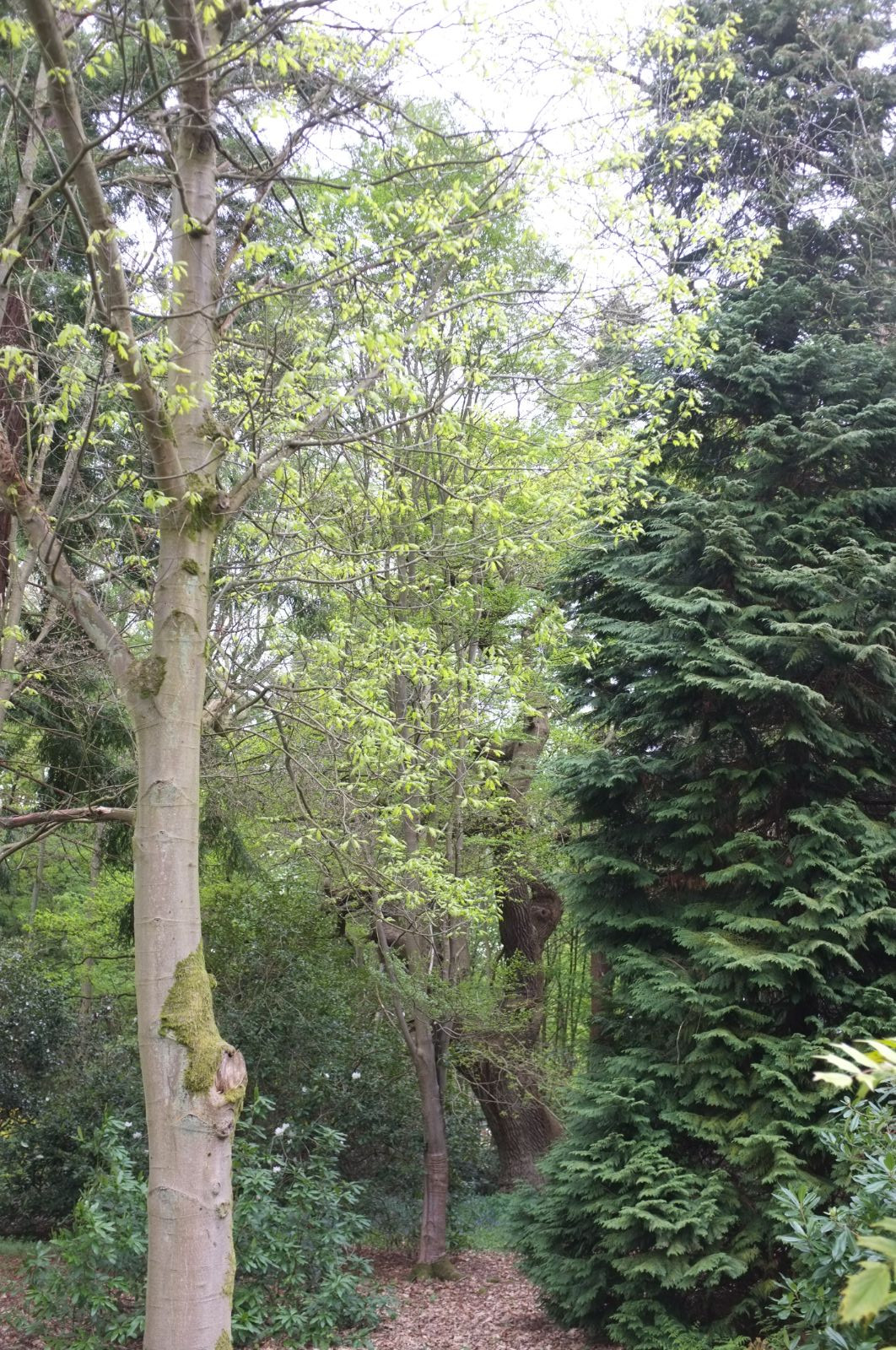Nothofagus menziesii × obliqua
Sponsor
Kindly sponsored by
Col. Giles Crisp
Credits
Owen Johnson (2020)
Recommended citation
Johnson, O. (2020), 'Nothofagus menziesii × obliqua' from the website Trees and Shrubs Online (treesandshrubsonline.
Genus
Other taxa in genus
- Nothofagus alessandrii
- Nothofagus alpina
- Nothofagus antarctica
- Nothofagus betuloides
- Nothofagus × blairii
- Nothofagus cliffortioides
- Nothofagus cunninghamii
- Nothofagus × dodecaphleps
- Nothofagus dombeyi
- Nothofagus fusca
- Nothofagus glauca
- Nothofagus gunnii
- Nothofagus × leonii
- Nothofagus macrocarpa
- Nothofagus menziesii
- Nothofagus moorei
- Nothofagus nitida
- Nothofagus obliqua
- Nothofagus pumilio
- Nothofagus solandri
- Nothofagus truncata
A semi-evergreen tree intermediate in characters between its parents. Bark cherry-like, purple-brown, with slender horizontal bands of pale lenticels, becoming grey and vertically fissured in maturity. Young shoots slender (c. 1 mm thick), tomentose. Leaves thinly leathery, rhombic-ovate, to 25 × 13 mm (on vigorous shoots to 30 × 15 mm); base entire, broadly cuneate and sometimes slightly unequal; glossy green and glabrous above, pale blue-green and glabrous beneath except for sparse hairs along the midrib; lateral veins in 4–6 pairs; sharply double-toothed or lobulate; petiole tomentose, c. 3 mm long. (Grimshaw & Bayton 2009).
USDA Hardiness Zone 7-8
RHS Hardiness Rating H5
Conservation status Not evaluated (NE)
The first intercontinental hybrid recorded in the genus Nothofagus (subgenus Lophozonia), between an evergreen small-leaved species from New Zealand (N. menziesii) and a deciduous large-leaved one from Chile (N. obliqua), arose in cultivation in the United Kingdom, the earliest record being from Weston Park in Staffordshire (Wigston 1979). What is probably the original tree grows in a rather shaded spot in Temple Wood and was 17 m × 33 cm dbh in 2019 (Tree Register 2020). A scion was received by Kew in 1976 and has grown well to reach 20 m × 48 cm dbh in 2016 (Tree Register 2020); a sister-tree planted in the National Collection at Wakehurst Place was 20 m × 37 cm dbh in 2015 (Tree Register 2020). At the Sir Harold Hillier Gardens, two specimens were received via the Forestry Commission at Alice Holt in 1982, of which the survivor was 12.5 m × 38 cm dbh in 2007 (Tree Register 2020). Allen Coombes, who provided the description of this tree originally published in New Trees, reported in early December 2007 that the tree was still in full leaf at that time, though a few leaves were turning yellow. He had not observed flowers or fruit. The fine, straight Kew specimen was half-bare in January 2008 when studied by John Grimshaw, and many of the remaining leaves were yellowish.
This hybrid does not show much hybrid vigour, though the known trees have grown slightly more quickly and reliably than the New Zealand parent is likely to have done, particularly in the warmer and drier gardens in England. The semi-evergreen habit is distinctive, though the New Zealand species (all of which are evergreen in the wild) can be almost bare of leaves by the end of a hard winter in cultivation in Britain, while the deciduous Andean N. antarctica has leaves just thick and shiny enough for it to be possible in summer to assume that it will be evergreen.
Three more mature trees seen by the author could possibly represent this same hybrid, but lack planting details, and could be of independent origin; in foliage detail they are slightly variable. A handsome straight-stemmed specimen, tucked away in the roadside strip behind the walled garden at Nymans in West Sussex and 18 m tall in 2016, has the cherry-like bark of Nothofagus menziesii but longer (2 cm) semi-deciduous leaves with about four fine marginal teeth for each of the six or so pairs of lateral veins; both the putative parents grow nearby. At Clyne Gardens near Swansea, one of a pair of young trees seen the summer of 2013 combined the bark of N. menziesii with the regular double-toothing seen in the Andean N. pumilio, while the other resembled N. antarctica in bark but had longer, finely toothed leaves like those of the Nymans tree.
It could be suggested that this hybrid, like most garden crosses, dilutes the distinctive – but still potentially confusing – features of this genus’ wild species; lacking extraordinary vigour or extraordinary beauty, it should probably not be chosen over any of the true species as a form to plant or propagate.





